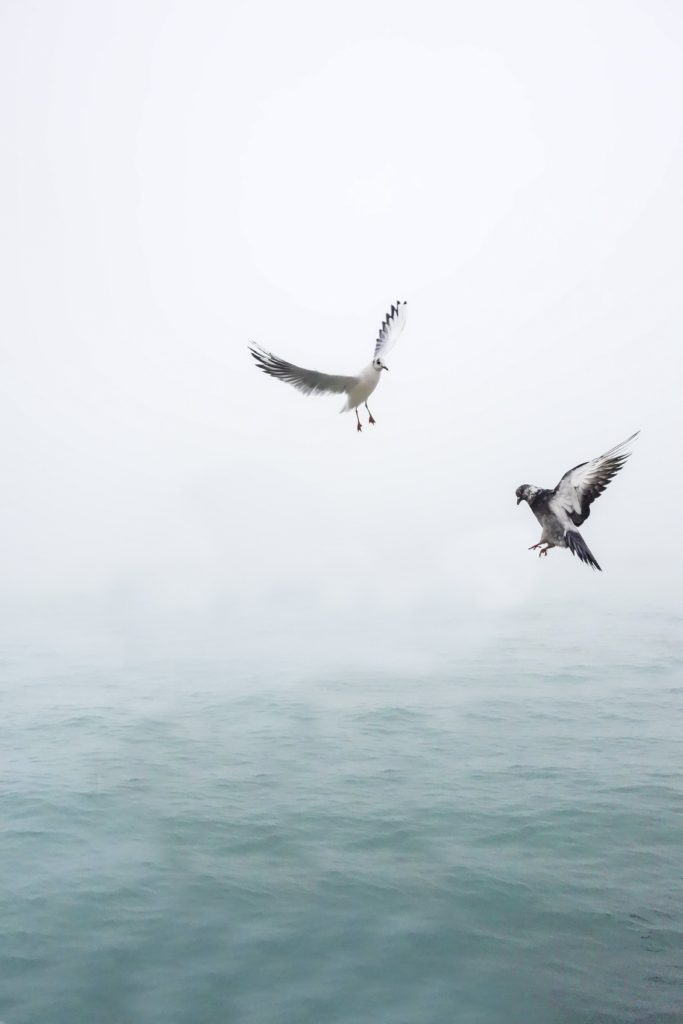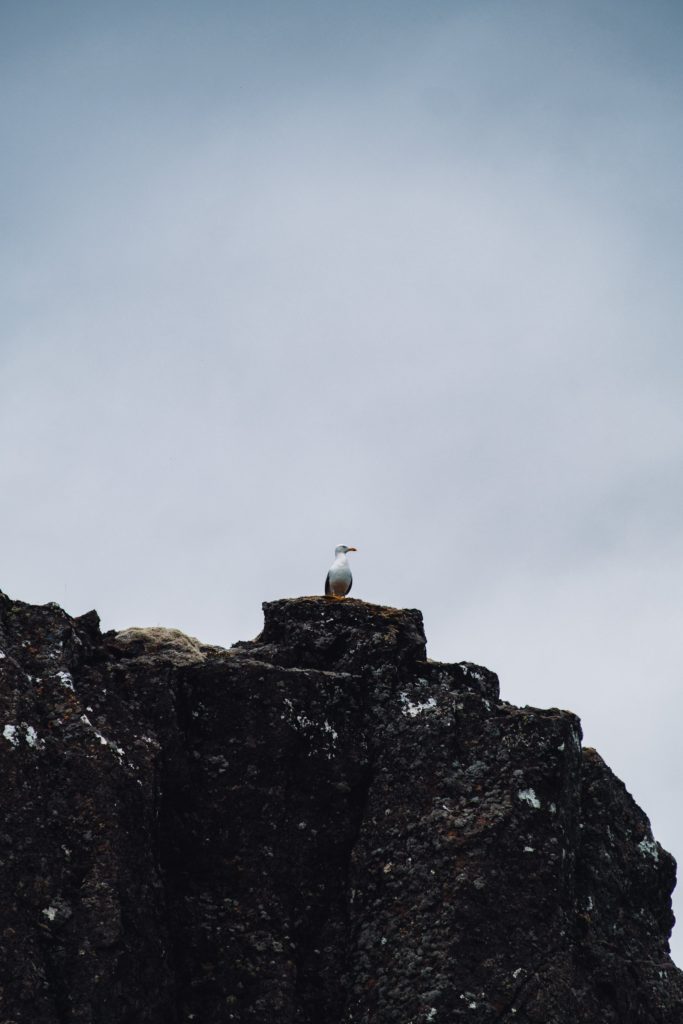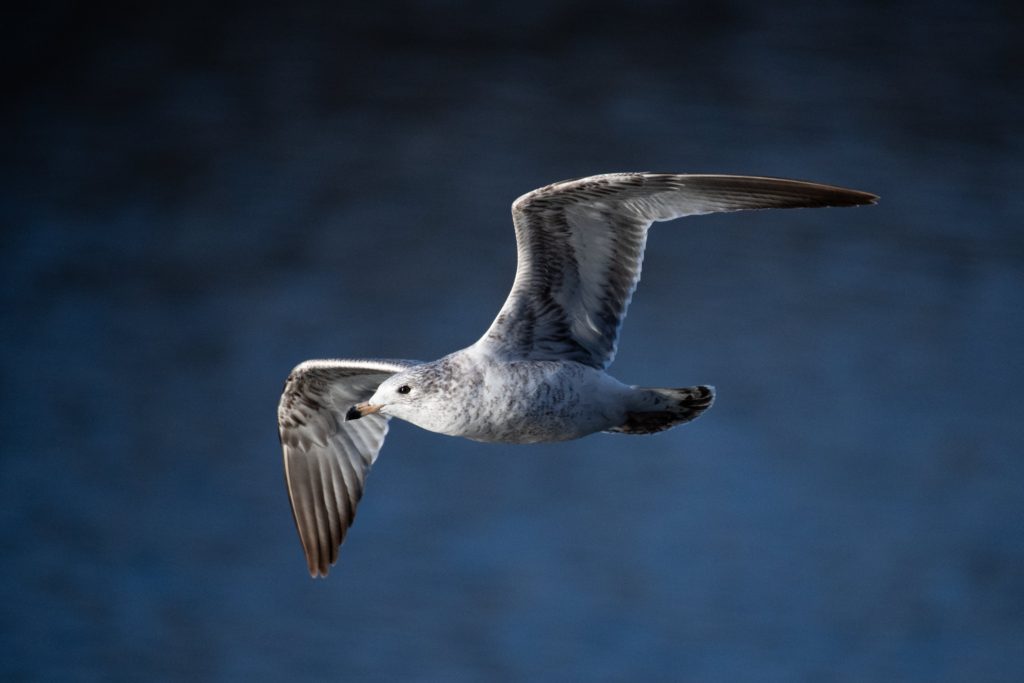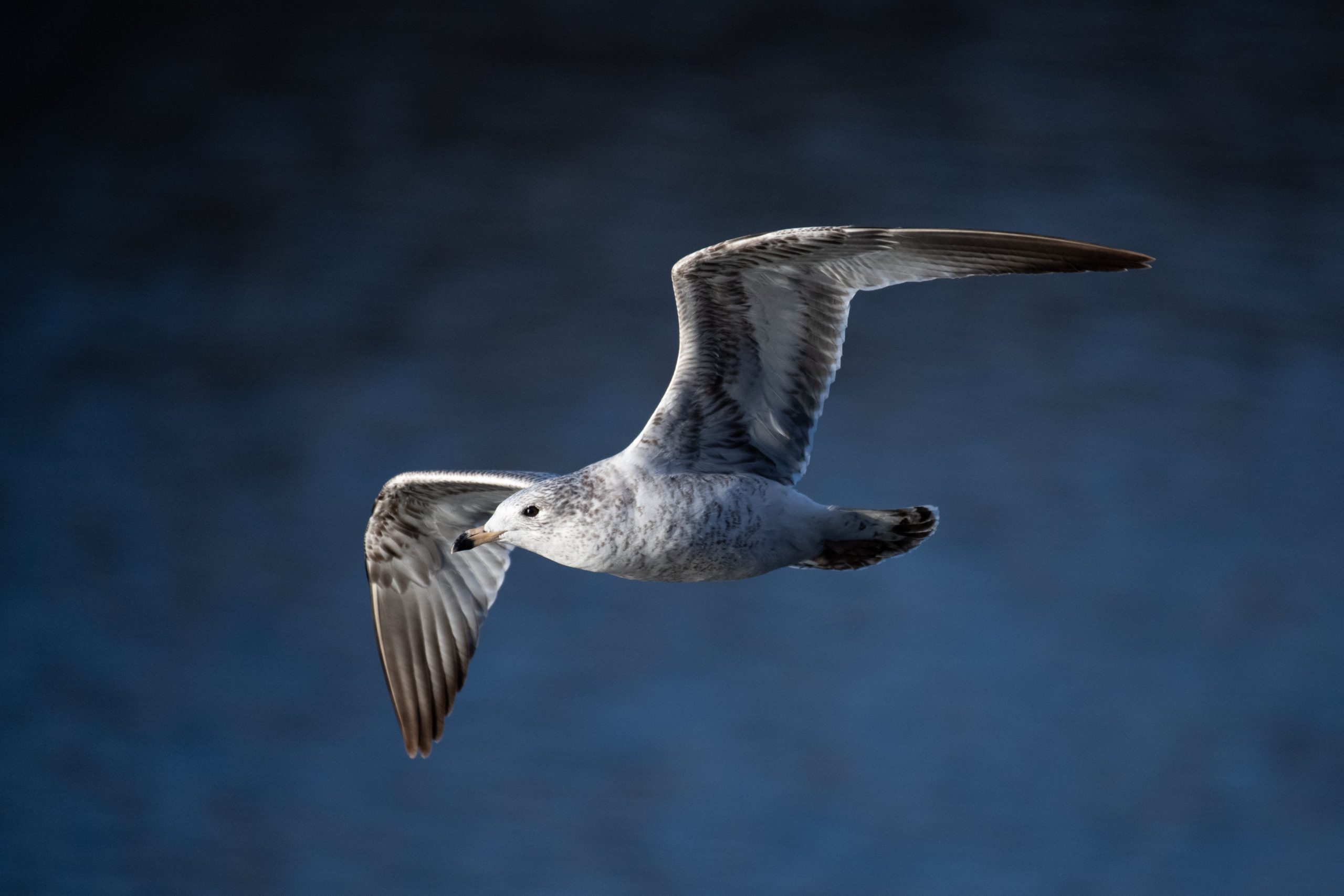Embark on the ultimate Heermann’s Gull getaway with these seabird watching tips. Whether you’re an experienced birder or a novice enthusiast, this article will provide you with all the information you need to make the most of your seabird watching adventure. Discover the best bird feeders, birdhouses, and bird seed brands to attract a diverse range of species. From specialist brands like Kaytee, Perky-Pet, and Droll Yankees, to well-known names like Wagner’s and Audubon, you’ll find everything you need to create the perfect bird haven. So grab your binoculars and get ready to witness the beauty of Heermann’s Gulls in their natural habitat.

Understanding Heermann’s Gull
Heermann’s Gull (Larus heermannii) is a medium-sized seabird that is native to the Pacific coast of North America. This bird is named after Adolphus Heermann, a 19th-century American naturalist who first discovered and described it.
Characteristics and Identification of Heermann’s Gull
Identifying Heermann’s Gulls is relatively easy due to their distinctive features. These gulls have a striking appearance with a black head, gray body, and a bright red bill. During breeding season, their bills turn even brighter, ranging from orange to a deep reddish hue. They also have dark eyes and bright red legs. Unlike most gulls, Heermann’s Gulls have a unique plumage pattern that doesn’t change significantly between breeding and non-breeding seasons.
Distribution and Habitat of Heermann’s Gull
Heermann’s Gulls can be found along the Pacific coast, from the southern parts of Oregon in the United States down to Baja California in Mexico. They breed on islands in the Gulf of California and the Pacific Ocean. These islands provide them with the necessary nesting habitat, which consists of rocky cliffs and sandy beaches. During the non-breeding season, they migrate northward and can be seen as far north as southern California.
Feeding Habits of Heermann’s Gull
Heermann’s Gulls primarily feed on fish and other marine creatures. They are skilled divers and will plunge into the water from the air to catch their prey. They are known to form large groups and engage in cooperative feeding behaviors, where they work together to herd schools of fish towards the surface. This feeding strategy allows them to access their food more easily. They are also opportunistic feeders and will scavenge for scraps and prey on small invertebrates along the shoreline.
Best Locations for Spotting Heermann’s Gull
If you are interested in seeing Heermann’s Gulls in their natural habitat, here are some recommended locations along the Pacific coast.
Coastal Regions for Heermann’s Gull Sightings
-
Channel Islands, California: The Channel Islands are a group of islands off the coast of California, and they serve as an important breeding ground for Heermann’s Gulls. Take a boat trip to one of the islands, such as Santa Barbara Island or Anacapa Island, for a chance to see these gulls up close during breeding season.
-
Monterey Bay, California: Monterey Bay is a renowned hotspot for seabird watching, and Heermann’s Gulls can often be seen here. Visit places like Moss Landing or Point Lobos State Reserve for excellent viewing opportunities.
-
Gulf of California, Mexico: If you’re up for an adventure, head south to the Gulf of California. Islands like Isla Rasa and Isla Cerralvo provide ideal breeding habitats for Heermann’s Gulls. Join a guided tour or charter a boat to explore these remote locations and observe these birds in their natural environment.
Seasonal Tips for Spotting Heermann’s Gull
To increase your chances of spotting Heermann’s Gulls, it’s helpful to know their seasonal movements.
-
Breeding Season: Heermann’s Gulls nest from late spring to early summer, typically between May and July. During this time, they gather in large colonies on their breeding islands. Plan your trip during these months to witness their courtship displays and observe their interactions.
-
Migration Season: Outside of the breeding season, Heermann’s Gulls migrate northward along the coast. They can be spotted in areas like southern California during the fall and winter months. Keep an eye out for flocks of gulls along the shoreline during these times.
National Parks and Protected Areas to Visit
Several national parks and protected areas along the Pacific coast provide excellent opportunities for bird watchers interested in observing Heermann’s Gulls. Here are a few notable locations:
-
Point Reyes National Seashore, California: This stunning coastal park offers diverse habitats and is known for its abundance of bird species. Look for Heermann’s Gulls along the beaches or join a guided birding tour for a more immersive experience.
-
Oregon Islands National Wildlife Refuge, Oregon: This refuge consists of several islands and rocky outcrops that are home to numerous seabird colonies, including Heermann’s Gulls. Take a boat tour or visit one of the designated viewing areas for a chance to see these gulls in action.
-
El Vizcaíno Biosphere Reserve, Baja California, Mexico: This UNESCO World Heritage Site is a vast protected area that encompasses a variety of ecosystems, including coastal wetlands. Explore the mangroves and estuaries for opportunities to spot Heermann’s Gulls along with other coastal bird species.
Essential Bird-Watching Equipment
To enhance your bird-watching experience, there are a few key pieces of equipment that every enthusiast should have.
Importance of High-Quality Binoculars
A good pair of binoculars is essential for bird watching. Look for binoculars with a magnification power between 8x and 10x and a wide field of view. This will allow you to get a close but still encompassing view of the birds without sacrificing clarity. Consider investing in binoculars that are waterproof and fog-proof, as these features ensure durability and usability in various weather conditions.
The Role of Cameras in Bird-Watching
While not necessarily a requirement, a camera can greatly enhance your bird-watching experience. Photography allows you to capture memorable moments and document your observations. Consider investing in a DSLR or mirrorless camera with a telephoto lens, as these setups provide the necessary reach to capture detailed shots of birds. Additionally, a lightweight tripod can help stabilize your camera and reduce fatigue during long observation sessions.
Practical Bird-Watching Apparel
When spending time outdoors observing birds, it’s important to dress appropriately. Opt for lightweight and breathable clothing that provides protection from the elements. Consider wearing a wide-brimmed hat to shield your face from the sun and protect against glare in your binoculars. Don’t forget to wear comfortable hiking shoes or boots to ensure you can explore different terrains comfortably.
Bird-Watching Etiquette
Respecting wildlife and their habitats is of utmost importance when engaging in bird watching. Here are some guidelines to follow to ensure you have minimal impact on the birds and their environment.
Respecting Wildlife and Their Habitats
Keep in mind that you are a visitor in the birds’ natural habitat. Avoid disturbing them or their nesting areas. Refrain from touching or attempting to handle the birds, as this can cause them stress and potentially harm them. Additionally, never remove anything from their habitats, such as feathers or eggs, as this disrupts the delicate balance of the ecosystem.
Observing Birds without Disturbing Them
When observing birds, try to maintain a distance that doesn’t interfere with their natural behavior. Use your binoculars or camera’s zoom lens to get a close look without getting too close physically. If a bird shows signs of distress, such as repeatedly vocalizing or moving away, it’s a clear indication that you are too close and should back off.
Keeping a Safe Distance from the Birds
Maintaining a safe distance is crucial not only for the well-being of the birds but also for your own safety. Some birds, especially those protecting their young, can become aggressive when they feel threatened or cornered. Respect boundaries and observe from a distance that allows you to appreciate the birds without causing disruption.

Setting up a Heermann’s Gull-Friendly Backyard
If you are unable to venture out to coastal regions to observe Heermann’s Gulls, you can create a bird-friendly environment in your own backyard that will attract a variety of bird species, including gulls.
Bird feeders and Selection of Bird Food
Consider incorporating bird feeders into your backyard to attract a diverse range of avian visitors. For Heermann’s Gulls, provide a platform or tray feeder where you can place fish scraps or small pieces of seafood. These gulls have a preference for marine-based food sources, so replicating that in your bird feeder will attract their attention.
Creating Safe and Appealing Perches
Gulls, including Heermann’s Gulls, like having a place to perch and rest. Install tall posts or sturdy branches in your yard where gulls can sit and keep an eye out for potential food sources. Ensure that these perches are safe and stable to accommodate the gulls’ size and weight.
Providing Fresh Water for the Birds
In addition to food, freshwater sources are essential for attracting various bird species to your backyard. Place a birdbath or shallow dish with clean water near the feeding area. Remember to frequently change the water to prevent the spread of diseases and ensure it remains fresh and appealing to the birds.
Brands Specializing in Bird-Watching Supplies
When it comes to bird-watching supplies, there are several reputable brands that offer a wide range of products. Here are a few notable brands to consider:
Kaytee – Bird Seeds and Feeders
Kaytee is a well-known brand that specializes in bird seeds, feeders, and accessories. They offer a variety of high-quality bird foods tailored to different species, including options suitable for attracting gulls.
Perky-Pet – Range of Bird Feeders
Perky-Pet is renowned for its wide range of bird feeders designed to attract various bird species. They offer feeders suitable for different types of bird foods, including those that can accommodate larger birds like gulls.
Wagner’s – Bird Seed Mixes
Wagner’s is a leading brand in bird seed mixes, offering blends specifically formulated to attract a variety of wild birds. They provide high-quality seed mixes that can be used to attract gulls as well as other species.
Brome Bird Care – Squirrel-Proof Bird Feeders
Brome Bird Care specializes in squirrel-proof bird feeders. Their innovative designs prevent squirrels from accessing the bird food, ensuring that the birds have uninterrupted access to the feeders.
Stokes Select – Bird Feeders and Seeds
Stokes Select offers a range of bird feeders and seeds suitable for attracting a variety of bird species. They provide durable feeders in different styles and sizes, as well as high-quality bird seed blends.

Interpreting Heermann’s Gull Behavior
Understanding the behavior of Heermann’s Gulls can enhance your bird-watching experience and provide insight into their natural history and ecology.
Understanding Heermann’s Gull Calls and Songs
Heermann’s Gulls have distinctive calls and songs that they use for communication. Their calls are typically loud, high-pitched, and resemble a series of hoarse screams. Listen for these calls when observing these gulls, as they can indicate various behaviors such as territorial disputes, courtship displays, or warning signals.
Interpreting Flight Patterns of Heermann’s Gull
Heermann’s Gulls are agile and acrobatic fliers. They have a direct flight style with strong wingbeats, but they can also glide gracefully over the water. Observe their flight patterns to gain insights into their foraging behaviors and preferred hunting areas. They often fly low over the water’s surface, searching for fish near the surface.
Social Behavior and Breeding Habits of Heermann’s Gull
Heermann’s Gulls are social birds and often gather in large flocks, particularly during the non-breeding season. These flocks can consist of hundreds or even thousands of individuals. During the breeding season, they form smaller colonies on rocky cliffs and islands. They are monogamous birds, with pairs forming strong bonds that can last for several years.
Contributing to Seabird Conservation
As a bird watcher, you can contribute to the conservation efforts aimed at protecting seabirds like Heermann’s Gulls. Here’s how you can make a difference:
Importance of Conservation for Heermann’s Gull
Conservation efforts are crucial for the long-term survival of Heermann’s Gulls and other seabird species. Human activities, habitat loss, and climate change pose significant threats to their populations. By supporting conservation initiatives, you can help protect their nesting sites, advocate for responsible coastal development, and raise awareness about the importance of preserving their habitats.
Audubon – Bird Conservation Initiatives
Audubon is a well-known organization that focuses on bird conservation. They have various initiatives aimed at protecting seabirds and their habitats. Join Audubon as a member or volunteer to contribute directly to their conservation efforts. You can also participate in their citizen science programs, such as bird counts and monitoring projects, to provide valuable data on bird populations.
How to Contribute to Seabird Conservation
Aside from supporting established organizations like Audubon, there are several other ways you can contribute to seabird conservation:
-
Reduce your ecological footprint: Make conscious choices to reduce energy consumption, waste production, and pollution. These actions help preserve the environment that seabirds rely on.
-
Support local conservation projects: Look for local organizations or initiatives focused on protecting seabirds in your area. Donate or volunteer your time to their efforts.
-
Educate others: Raise awareness about seabird conservation by sharing your knowledge and experiences with others. Encourage responsible behavior when visiting coastal areas, such as picking up litter and respecting signage and designated nesting sites.
Training and Courses for Bird-Watching
While bird-watching can be a casual hobby, professional training can greatly enhance your skills and knowledge. Consider the following options:
Importance of Professional Training for Bird-Watching
Professional training for bird-watching can provide you with valuable insights into bird behavior, identification techniques, and field research methods. It can also help you develop a deeper appreciation for birds and their habitats. Consider taking courses or attending workshops to sharpen your skills and expand your bird-watching abilities.
Recommended Bird-Watching Courses and Workshops
Many organizations and educational institutions offer bird-watching courses and workshops. Look for opportunities that cover topics such as bird identification, habitat conservation, and field research techniques. Local birding clubs and bird observatories often organize educational events and outings that cater to bird watchers of all skill levels.
Certifications for Bird-Watching
Several organizations offer certifications for bird watchers. These certifications provide recognition for your knowledge and skills, as well as opportunities to contribute to citizen science projects and professional networks. Examples include the Certified Bird Observer program offered by the North American Bird Conservation Initiative and the Certified Wildlife Interpreter program offered by the National Association for Interpretation.
Capturing the Experience: Notes and Photography
Documenting your bird-watching observations and capturing photos of birds can be a rewarding way to extend the experience. Here are some tips for effective documentation and photography.
Documenting Bird-Watching Observations
Keep a bird-watching journal to record your observations, including the species you’ve seen, their behaviors, and the habitat conditions. Note the location, date, and time of your observations. This record will serve as a valuable reference and can contribute to citizen science initiatives by providing data on bird populations and behaviors.
Photographing Heermann’s Gull: Tips and Techniques
Photography allows you to capture the beauty of Heermann’s Gulls and share it with others. To photograph these birds effectively:
-
Use a telephoto lens: Heermann’s Gulls can be skittish, so a telephoto lens will allow you to photograph them from a distance without disturbing them.
-
Capture their distinctive features: Focus on capturing the gull’s bright red bill, contrasting black-and-gray plumage, and striking red legs. These features define the species and make for visually appealing photos.
-
Be patient and observant: Spend time observing gulls before taking photos. This will give you a better understanding of their behaviors and allow you to anticipate interesting moments to capture.
Sharing and Discussing Observations with Fellow Bird Watchers
Bird watching is a social activity, and sharing your experiences can be enriching. Join local birding communities, online forums, or social media groups to connect with other bird watchers. Share your stories, photos, and observations, and engage in discussions about bird behaviors, identification, and conservation. This exchange of knowledge and experiences can enhance your understanding of Heermann’s Gulls and foster a sense of community among bird watchers.
